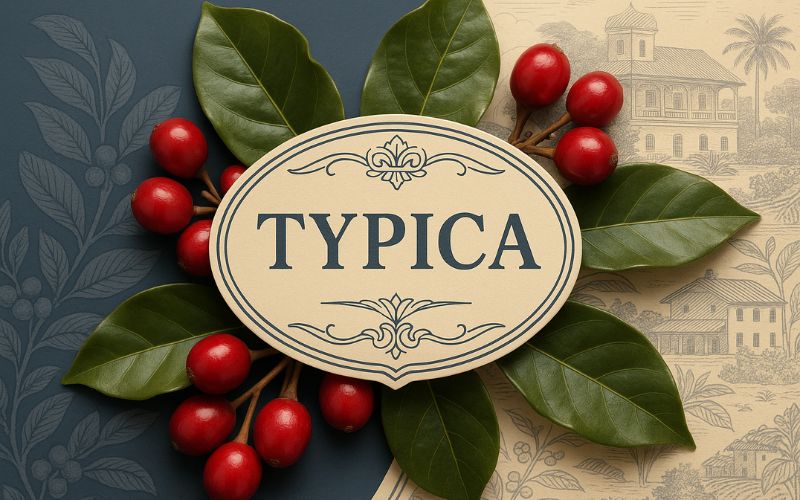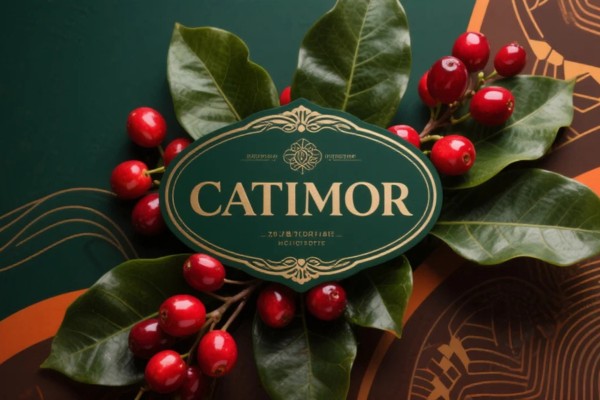
Typica: A Deep Dive into the Original Coffee Variety
Explore the rich history, complex flavor profile, and global journey of Typica, one of the most culturally and genetically important Coffea arabica varieties in the world. This comprehensive guide covers its origins, cultivation challenges, and how to best enjoy a cup of this historic coffee.
The Enduring Legacy of a Foundational Bean
Typica, a name that resonates with history and quality, stands as one of the most significant and foundational varieties of Coffea arabica. Often considered the progenitor of many of the world's most celebrated coffees, Typica is a variety that has literally traveled the globe, shaping economies and coffee cultures along the way.
It is characterized by its tall, conical stature, with long, elegant branches that droop with the weight of large, oblong cherries. While its physical grace is undeniable, Typica presents a paradox for farmers: it is capable of producing a cup of unparalleled elegance and complexity, yet it is notoriously low-yielding and highly susceptible to diseases and pests.
This combination of exceptional quality and agricultural difficulty has defined its journey and cemented its status as a prized, albeit challenging, variety in the world of specialty coffee.
A Global Journey: History and Origins
The story of Typica is the story of coffee's global expansion. Its genetic roots lie in the wild coffee forests of southwestern Ethiopia, the birthplace of all Coffea arabica. From Ethiopia, coffee made its way to Yemen, where it was first commercially cultivated and traded out of the port of Mocha.
The narrative of Typica's global journey begins in earnest in the late 17th century when the Dutch acquired live coffee seedlings from Yemen. They brought these plants to their colonies in Java (modern-day Indonesia) around 1696, successfully breaking the Yemeni monopoly. The coffee that thrived in Java became known as Typica, the "standard" coffee.
From Java, a single Typica plant was sent to the botanical gardens in Amsterdam in 1706. In 1714, a plant from these gardens was gifted to King Louis XIV of France. This plant, nurtured in Paris, became the genetic source for a massive wave of coffee cultivation in the Americas.
French naval officer Gabriel de Clieu transported a seedling to Martinique in the 1720s. This single plant is considered the ancestor of the vast majority of Typica coffee still grown throughout Central and South America. Every cup of traditional Latin American Typica can trace its lineage back to that one, well-traveled plant.
The Typica Sensory Experience
Typica coffees are celebrated for their potential for a clean, refined, and complex cup profile. While terroir and processing play a huge role, there is a core set of characteristics that define a classic Typica.
- Acidity: The acidity is often its most praised feature. It's typically bright, crisp, and clean, often with a distinct citric quality like lemon or sweet orange.
- Body: Typica generally has a light to medium body. The mouthfeel is often described as smooth, elegant, or tea-like.
- Aroma: The aromatics can be exceptionally beautiful. Floral notes like jasmine and orange blossom are common, intertwined with delicate spicy notes.
- Flavor: The flavor profile is known for a foundational sweetness, often like brown sugar or honey. This is complemented by a range of fruit notes, from red fruits like cherry to stone fruits like peach. The aftertaste is typically long, sweet, and clean.
Challenges in Cultivation
For all its quality in the cup, Typica is a demanding plant to cultivate. Its tall stature can make it difficult to manage, and its genetic makeup leaves it highly vulnerable to threats.
- Low Yields: Compared to modern hybrids, Typica produces significantly fewer coffee cherries, making it a less profitable choice for many farmers.
- Disease Susceptibility: It is famously susceptible to coffee leaf rust (la roya), a devastating fungus, as well as Coffee Berry Disease and nematodes.
- Nutrient Demands: Typica requires nutrient-rich soil and careful management. It thrives at high altitudes (above 1,200 meters) where cherries mature slowly, developing more complex flavors.
These challenges mean that growing Typica is a labor of love, often requiring access to the specialty market where its quality commands a higher price.
Prominent Growing Regions
Despite its challenges, Typica is still cultivated in regions known for producing exceptional coffee:
- Jamaica: The world-renowned Jamaica Blue Mountain coffee is a Typica variety.
- Hawaii: The famous Kona coffee is also a Typica variety, known for its rich, buttery body.
- Peru: Peru has a significant number of old Typica farms, often producing organic coffees with bright acidity.
- Indonesia: Descendants of the original Dutch Typica plants are still grown in Sumatra and Flores.
- Colombia: While many farms have replanted, some traditional farms still cultivate Typica, producing stunningly complex coffees.
Brewing for Brilliance
To get the most out of a high-quality Typica, your brewing method should highlight its delicate aromatics and bright acidity.
- Recommended Methods: Pour-over methods like the V60, Kalita Wave, or Chemex are ideal for producing a clean cup.
- Grind: A medium-fine grind for pour-overs will help achieve a balanced extraction.
- Water Temperature: Use slightly cooler water, around 92-96°C (198-205°F), to preserve delicate notes.
- Ratio: Start with a standard 1:16 coffee-to-water ratio and adjust to your taste.
The Progenitor of a Family Tree
While pure Typica is less common now, its genetic legacy is immense. It is one of the two main parent varieties (along with Bourbon) of the entire arabica family tree. It has been crossed to create important hybrids, including:
- Mundo Novo: A natural hybrid of Typica and Bourbon.
- Pacamara: A cross between Pacas (a Bourbon mutation) and Maragogipe (a Typica mutation).
Conclusion: A Taste of History
To drink a well-grown and well-brewed Typica coffee is to experience a living piece of coffee history. It represents a direct link to the beginnings of global coffee culture.
While it has been surpassed in productivity by its modern descendants, it has been surpassed by very few in its potential for sheer elegance and complexity in the cup. For coffee lovers, it is a benchmark for quality and a delicious reminder of the long and fascinating journey of the coffee bean.


